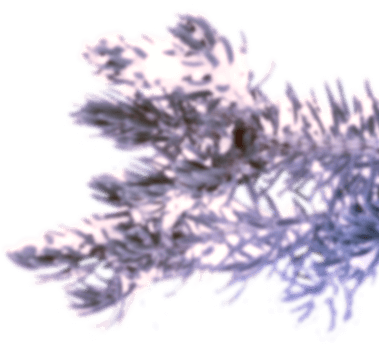Cultural motivations, geological ones, zoological, botanical and historical ones.Moods that derive from the conquest of peaks, valleys, lakes, forests and settlements.
The earliest traces of human presence in the Val Baganza date back to the late Paleolithic period (200,000/250,000 years ago), while the first settlements date back to the Neolithic age (about 5,000 b.c.).
Some stone tools unearthed found at Marzolara belong to this period. Chisels and arrowheads were found in various locations and they are dated eneolithic or copper age (3,000 b.c.). At the Castellaro of Fragno and Monte Bosso were detected traces of bronze age (1500 BC), connectable to a Liguria or ‘proto ligure’ culture widely grown in different areas of the Apennines.
The Castellaro of Fragno was the subject of a systematic archaeological excavation conducted some years ago by the Institute of Archaeology at the University of Bologna and the Archaeological Museum of Parma. The exhibits (plant and animal materials, shards of pottery, flint artifacts and metals) have made it possible to reconstruct the life of the population, based on hunting, on a limited cultivation and especially on sheep farming.
A funeral equipment found in Casa Selvatica can be reported to a tomb of late 4th century BC, and this is the most prestigious archaeological item found in Val Baganza. The presence of Roman culture in the Middle Valley is widely documented by several toponyms (place names of Latin origin covered by suffixes ano, olo, ola,) and also from recent signals of materials.
Overall the Roman population appears tied basically to the exploitation of agricultural resources of the territory and is centred around the vicus (small village) and on isolated farms, located where the conditions are more positive: sunny shores, stable and scanted steep slopes.
In the middle ages is essentially kept the roman demographic structure. There is in fact a good coincidence of place names and sites that have yielded Roman material with churches cited in the earliest “rationes decimarum” and locations mentioned in the oldest archival documents.
It is already defined in this period the system of roads, almost unchanged up to 800. In addition to the paths to the ridge and the coast, which during some months of the year were the only possibility to move up the valley, the town was crossed by streets perpendicular to the river that were connected to the centres of nearby valleys (Val Parma and Val Taro) and path of Strada Romea (Bardone, Terenzo, Casola and Cassio). The medieval population is still partially recognizable in urban centres, in the few remaining castles, religious architecture and a series of minor architectural monuments (tower houses, courtyards, mills). In the 13th century churches in the Valley were Alpicella, Vigolone, Calestano, Marzano, Cella di Palmia, depending on the parish of Bardone, and Fragno, Ramiano, Vallerano, Marzolara, depending on the parish of Castrignano.
The life documentation about this period is scarce. You can however strongly immagine that it was not very different from the rest of the Apennines. Survival, heavily conditioned by events, was linked to the breeding of sheep and pigs and the cultivation of cereals (wheat, barley, oats and spelt), pulses (vetch, beans), vegetables (turnips, cabbage), hemp, the collection of fruits and berries and wood and leaves. In many ways this pattern of life continued up to the threshold of this century, and intense exploitation of the land dictated by necessity resulted in certain historical periods a serious depletion of the already thankless territory. Val Baganza, due to the morphological characteristics and for the precariousness of the routes, did not favor economic development and was always subservient to the neighbouring valleys of Parma and Taro, but had to have some strategic interest, partly because of its proximity to the location of the strada Romea. It was equipped with a series of fortresses and fortified buildings that allowed the almost total control of the Valley (Sala Baganza , Felino, Castellaro, Torre del Borriano, Marzolara, Ravarano, Alpicelle, Vigolone, Casola, Calestano, Fugazzolo). In the process of dividing the communal lands, after the codification of the feudal ownership, the valley was split between different hosts and the territory that is now the municipality of Calestano was traversed by many borders. Since the second half of the 13th century Calestano, Marzolara, Vigolone, Alpicella, had entered the area of influence of the genoese ducal family Fieschi, that had many expansionistic inland, and thus became the scene of battles between these and the Visconti, and battlefield of so-called salt war (1350-55), fought by the municipality of Parma against Fieschi. In 1426 Calestano was the scene of the assault by Pietro Rossi who, under the Visconti, strongly opposed to the Fieschi. The feud was regained in 1443 and sold to Tarasconi family in the 17th century. he fief of Ravarano was purchased in 1214 by Pelavicino Pallavicino; it was initially lost in a war against the town of Parma and aroung 1300 it was annex again at Pallavicini vast manor. Until the end of the 500 the Rocca and the surrounding area were the subject of constant strife, until they passed to the Boscoli family in 1687. After the birth of the farnesian duchy the area of Calestano, and especially the Rocca of Vigolone, found themselves in the middle of the war of Parma (1547).
From this period are the first documents of the archive of Calestano, which retains a fair amount of material related around the 16th 17th, 18thcenturies. The municipality subsequently followed the events of the Duchy.
Once the warlike feudatories were tamed and transformed into courtiers, the ife of villagers was less turbulent. Even if they were always oppressed, they were no longer threatened by war or by the passage of armies to or from Rome (Romea route decayed as a link between the North and Rome in the late 16th century). The local economy, however, was never prosperous enough to ensure the prosperity of all villagers, forced to emigrate.
With the advent of the Kingdom of Italy the road network began to be developed, and become carriage roads on the streets of Fragno and Lesignano Palmia. The agriculture system was rationalized and it was introduced new crops (vines, beans, clover and alfalfa).
Well known today as a privileged destination for cyclists and faithful holidaymakers, the municipality of Calestano was visited by famous people. Ferdinand I of Borbone, Princess Amalia and Maria Luigia were the promotive ones who spread the mode of a tour in Val Baganza, Sporno or Montagnana.
Until 1952 Marzolara was linked to Parma by a tram, and became one of the first places frequented by the early skiers.











